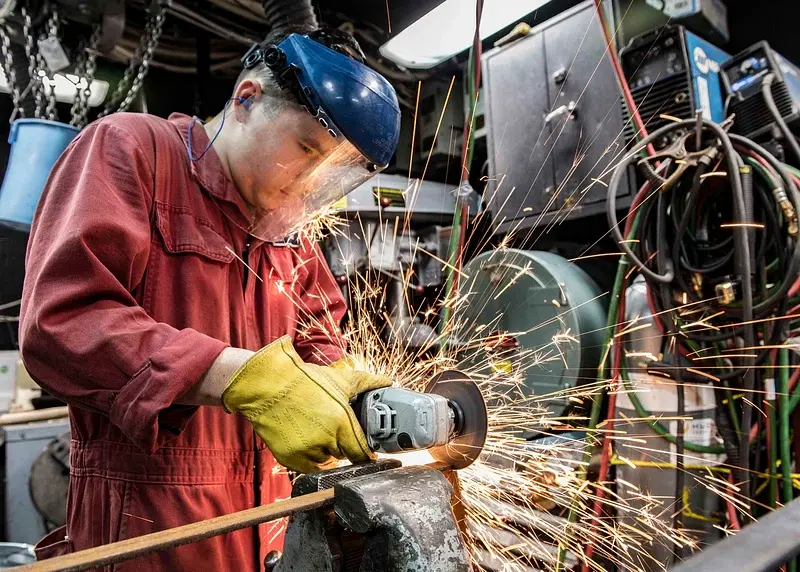Introduction to Modern Welding Techniques
The realm of welding has witnessed monumental changes over recent decades, evolving from rudimentary methods to advanced technological marvels. These changes have kept pace with industrial progress and often led it, offering solutions to increasingly complex requirements. Modern welding techniques have transformed the landscape, providing durability, efficiency, and versatility across various industries, including construction, aerospace, automotive, and electronics.
Such innovations underscore the broader trend towards more efficient and sustainable production processes. By embracing these modern solutions, industries can enhance their operational capabilities, minimize errors, and ensure superior weld quality, preparing them for the challenges of an ever-demanding global market.
The Rise of Laser Welding
Laser welding is a pioneering technique that leverages the power of concentrated light to fuse materials. This method offers high precision and speed, which is invaluable in applications requiring meticulous attention to detail. Unlike traditional welding, which may leave noticeable seams, laser welding provides clean and almost invisible welds, essential for aesthetic and functional purposes. Key sectors such as electronics and medical device manufacturing have significantly benefited from this technique due to its ability to join delicate and intricate components without compromising integrity. One notable advance is the development of sophisticated welding equipment Troy OH, particularly in industrial hubs.
Moreover, laser welding’s energy efficiency is another compelling advantage. It requires lower power levels compared to some conventional methods, aligning well with global efforts to promote sustainable manufacturing practices. As industries strive to reduce waste and energy consumption, adopting laser welding techniques represents a step forward in achieving these critical goals.
Friction Stir Welding: A Hybrid Approach
Friction stir welding (FSW) introduces a paradigm shift by joining materials without melting them. This solid-state process utilizes a rotating tool to create frictional heat that softens materials, allowing them to be forged together under pressure. FSW is particularly advantageous in sectors where material integrity is non-negotiable, such as aerospace and automotive. These industries require robust and reliable joints due to the high-stress conditions in which their products operate.
Beyond strength, FSW reduces material distortion, a common issue with traditional welding that can compromise structural integrity. The absence of melting also minimizes problems such as cracking and porosity, further reinforcing the quality and durability of the welds produced. By adopting friction stir welding, industries enhance product performance and contribute to safer and more efficient production processes.
Advantages of Robotic Welding in the Industry
The introduction of robotic welding has been transformative, enabling manufacturers to achieve unprecedented precision and productivity. Robots excel in performing repetitive tasks without fatigue, ensuring consistent quality in high-volume production environments. Robotic welding systems are invaluable for industries like automotive and shipbuilding, where production timelines are critical. They allow for faster turnaround while maintaining stringent quality standards.
However, the transition to robotic welding does present particular challenges, including the need for sizeable upfront investments and the requirement for skilled personnel to program and maintain these sophisticated machines. Despite these hurdles, the long-term benefits of cost savings, reduced waste, and improved product consistency make robotic welding a worthy investment for forward-thinking companies.
Understanding the Eco-Friendly Aspects of Welding
The push towards environmental sustainability has encouraged the welding industry to rethink its practices. Modern welding techniques are developed to reduce environmental impact, ensuring that welding processes align with global sustainability initiatives. Techniques like laser welding use less energy, and advanced materials reduce waste and emissions during production.
Sustainable practices are essential for compliance, reducing operational costs, and capitalizing on the growing demand for eco-friendly products. By emphasizing sustainable manufacturing practices, companies can position themselves as leaders in eco-conscious industries, appealing to environmentally aware consumers and stakeholders.
Recent Advancements in Welding Safety
Safety remains paramount in welding due to inherent risks like burns, toxic fumes, and respiratory issues. Recent advancements in safety measures aim to mitigate these risks by enhancing equipment and procedural guidelines. Modern welding machines have ventilation systems and advanced personal protective equipment (PPE) to safeguard workers.
Moreover, education plays a critical role in reinforcing safety in welding environments. Regular training sessions and workshops help workers remain informed about the latest safety standards and protocols. Industries at the forefront of innovative industrial processes often lead by example, implementing best practices that protect their workforce and ensure smooth operations.
The Future of Welding Technologies
The future of welding is bright, with digital technologies such as artificial intelligence (AI) and machine learning setting the stage for the next wave of innovations. These technologies promise to transform welding from an art into a precise science, where real-time data analytics optimize processes and predict potential failures before they occur.
AI-powered systems can adapt to material and environmental conditions variances, ensuring consistent quality. However, integrating these advanced technologies requires industries to invest in updated infrastructures and skilled professionals capable of effectively implementing and managing these systems.
Real-World Applications of Innovative Welding Methods
The adaptability and efficiency of modern welding methods are evident across various industries. For instance, the construction sector uses laser and robotic welding to fabricate robust and long-lasting structures swiftly. In contrast, the medical field depends on laser welding to create precise instruments for surgeries and other delicate applications. These advancements have allowed engineers to push the boundaries of design and functionality.
By continuing to develop and implement these innovative methods, industries can remain competitive globally, meeting the demands of increasingly complex projects while adhering to safety and sustainability standards.




